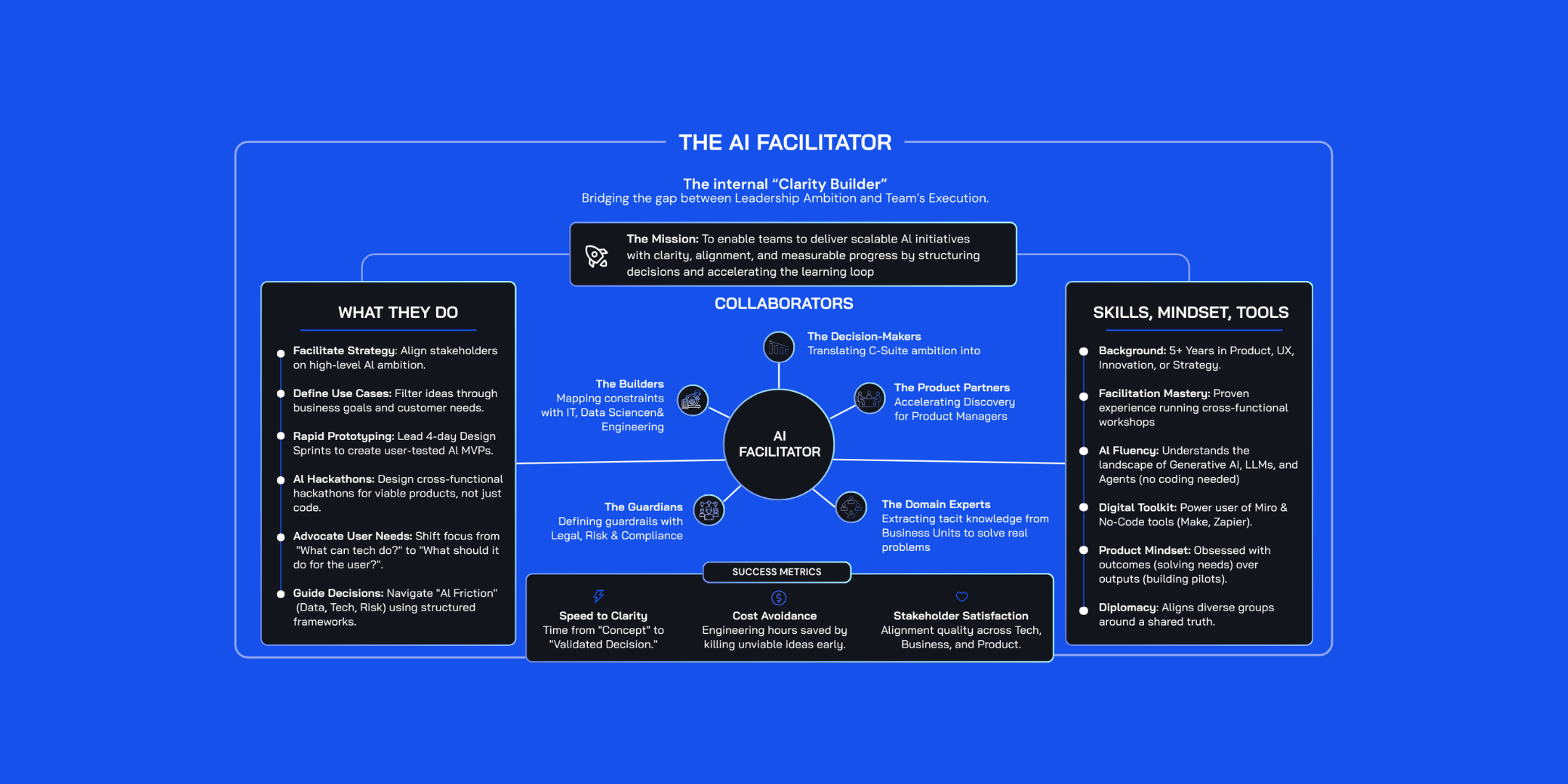Avoiding Pitfalls: What Product Managers Should Know About Design Sprint Prototypes

When launching a new product, it's important to minimize risks and ensure you're building something customers want. This is where prototypes, proofs of concept (PoCs), and minimum viable products (MVPs) come in. Yet, misunderstandings about these tools often lead to wasted resources and frustration.
Understanding the unique role of prototypes, especially in the context of Design Sprints, can help Product Managers make better decisions, reduce risk, and streamline the product development process.
Understanding Prototypes, PoCs, and MVPs
A prototype is an early model built to test desirability—will users like it, understand it, or find it solves their problem? The goal is learning.
At Design Sprint Academy, we utilize Design Sprints—a four-day process that brings together cross-functional teams to solve critical problems through design, prototyping, and testing with real users. The prototypes developed are realistic enough to gather meaningful feedback but are intentionally disposable to facilitate quick iteration.
However, the term Prototype is often confused with PoC or MVP, each serving distinct purposes.
A Proof of Concept (PoC), on the other hand, is about feasibility: Can it be built with current technology? It’s about verifying that a solution works technically before fully committing.
Lastly, the Minimum Viable Product (MVP) tests a product’s viability. It’s the bare minimum needed to satisfy early adopters and gather feedback. This is the point where market fit is tested, and monetization strategies are explored.
For a more detailed explanation of the differences between prototypes, PoCs, and MVPs, read John Vetan's full article: Keep Saying MVP.
Ideally, Product Managers would first validate a prototype to ensure the product resonates with users, then develop a PoC to confirm the solution can be technically implemented, and finally build an MVP to test market fit and monetization strategies. See the diagram below:
.jpeg)
Imagine you’re a Product Manager in the discovery phase, preparing to validate your concept’s desirability using Design Sprint prototypes. As you familiarize yourself with the process and methodology, be sure to avoid the following common mistakes.
Misconception 1: Prototypes Are the Same as the Final Product
Reality Check
A prototype is not the final product; it's a tool for learning and exploration. It's designed to simulate the user experience and gather feedback on design, functionality, and usability without the need for full-scale development. In fact, they should be no-code prototypes. They are also disposable and used only to test assumptions quickly and efficiently.
Why it Matters
Confusing high-fidelity Design Sprint prototypes with final products can lead to unrealistic expectations and derail the development process. Stakeholders, impressed by the prototype's polish, might assume it’s “ready to go”. This overlooks the necessary phases of usability testing, user experience refinement, and further design & development that follow.
Misconception 2: Prototypes Must Include All Features
Reality Check
Design Sprint prototypes should be lean and focus on core functionalities—not packing in every planned feature. The key is simplicity—testing essential functions that address user pain points or validate specific hypotheses.
Why it Matters
Overcomplicating a prototype with unnecessary features leads to confusion. Users might struggle to give targeted feedback, and the team may end up with ambiguous results. By keeping the prototype focused, you ensure clearer insights and can make quick, impactful iterations that improve the overall product.
Misconception 3: Prototyping Is Too Expensive and Requires Specialized Personnel
Reality Check
Prototyping doesn’t have to break the bank. With tools like Uizard AutoDesigner 2.0, teams without dedicated designers can build realistic, high-fidelity prototypes quickly and affordably. The days of needing an entire UX team to craft prototypes are behind us—AI-powered design tools democratize the process, allowing teams to bring ideas to life without the traditional barriers of cost and specialized skill.
Why it Matters
Avoiding prototyping due to cost concerns can result in bigger expenses down the line when unvalidated products fail.
Want to know how we're using AI prototyping? Join Canva '24 for a deep dive with John Vetan from Design Sprint Academy.
Misconception 4: Prototypes Replace the Need for User Research
Reality Check
There's a notion that creating and testing a prototype is enough and that you don’t need foundational user research. While a prototype serves as a valuable testing tool to see if your solution fits the problem, it doesn't tell you if you're solving the right problem.
Why it Matters
Without user research conducted prior to building the prototype, you might be developing solutions for issues that don't truly exist or are based on flawed assumptions. Good prototypes start with a clear understanding of user pain points, ensuring that what you’re testing is grounded in reality, not guesswork.
That’s why we advocate for a Problem Framing phase at Design Sprint Academy, where teams align on the true challenge before jumping into solution mode.
Problem Framing involves:
- Conducting User Research: Gathering real insights into user needs and pain points.
- Engaging Stakeholders: Collaborating with key stakeholders to prioritize problems.
- Defining the Challenge: Selecting the right challenge for the sprint team to solve, ensuring alignment with business objectives and user needs.
By investing time in Problem Framing, you lay a solid foundation for your prototype, making it a more effective tool for validation and increasing the likelihood of a successful outcome.
Final Thoughts
Prototypes are invaluable in product development, but only when used wisely. By understanding their purpose and limitations, product managers can avoid common pitfalls and ensure their teams are focused on what really matters—solving user problems effectively and efficiently.
Remember, prototypes are not about perfection; they’re about learning and iterating. When done right, they accelerate the path to a successful product launch.

.jpg)







